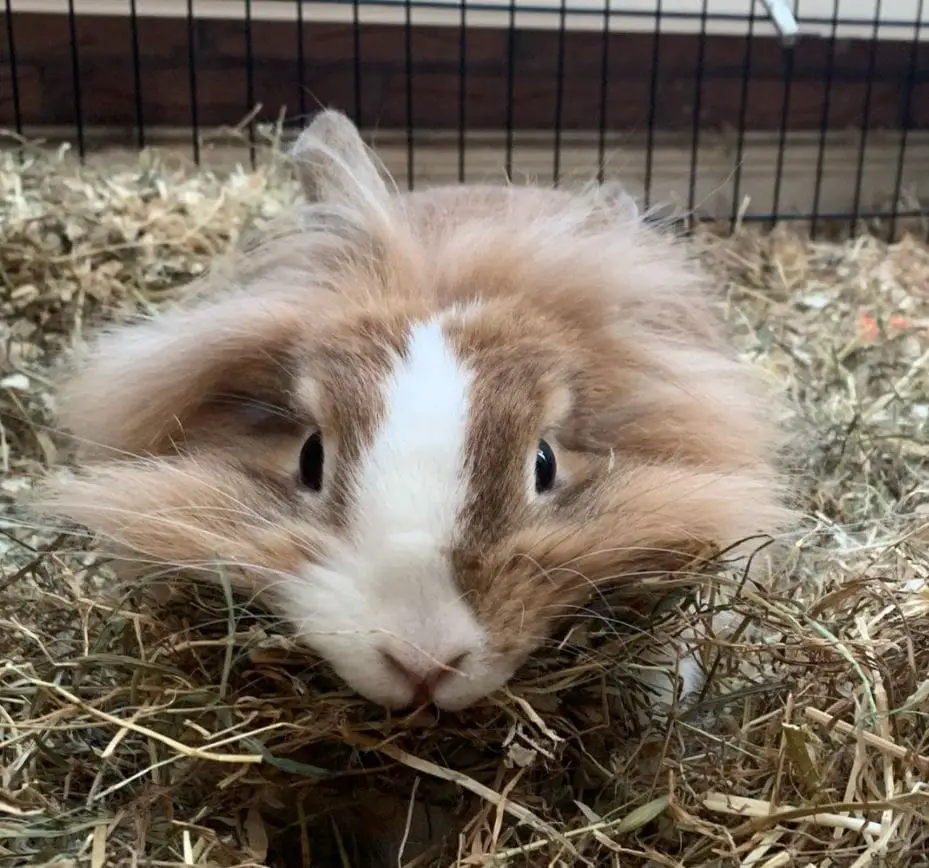If you have unneutered rabbits of different genders, you’ll likely be trying to keep them apart as much as possible to avoid baby bunnies. But many owners will keep their rabbits in neighboring cages and as such, they end up asking can rabbits mate through a cage or fence?
Rabbits do not usually have enough room or the agility to successfully mate through a cage or a fence. However, they may attempt to make contact so keeping adjacent cages a few inches apart is recommended. You may notice your rabbits scratching, biting, or fur biting through a cage in an attempt to mate.
The problem with rabbits is that they are highly fertile animals and can breed at an astonishing rate. If you’ve ever wondered whether their reputation for ‘breeding like rabbits’ is well-earned, we can tell you that it is. Let’s find out more about rabbit mating and how to check whether your doe is pregnant.
Can Rabbits Mate Through A Fence Or Cage?
In order to mate, rabbits need to be able to have full contact with one another. This simply wouldn’t be possible when there is a fence or cage separating them. However, bunnies have a natural instinct to try and reproduce when they are around a member of the opposite sex.
If the rabbits are placed in neighboring enclosures, there is a very real chance that they may attempt to get through to their potential mate. They’re certainly determined creatures!
It may come as a surprise to learn that when rabbits are able to mate, there is a huge chance that they will be successful. In most cases, 95% of all mated rabbits will become pregnant upon the first try. What’s more, bunnies don’t mess around when it comes to waiting between pregnancies.
As humans, we’re accustomed to leaving at least a few months, potentially years between babies. But rabbits can have as many as 13 litters in a year! They are even able to become pregnant directly after giving birth. That being said, we would never encourage breeders to mate their bunnies at this rate as it can put a lot of physical strain on the females.
If you have a male and a female bun then it is best to keep them apart, unless you intend to become the proud owner of up to 14 additional rabbits. Placing each rabbit in a different cage is the only way to ensure that they cannot mate. In addition to this, you may wish to consider putting the cages a reasonable distance from each other. This may prevent the rabbits from sensing one another and will stop them from biting or fur pulling through the cage.
How To Tell If A Rabbit Is Pregnant
Whilst it is incredibly unlikely that your rabbits would mate successfully through the bars of a cage or fence, if they do have contact, there is a chance your doe could conceive. However, since rabbits are only pregnant for around 30-31 days, it can be tricky to tell whether they are pregnant. Many bunny owners only find out that the mother was expecting after she delivers her litter.

That being said, there are several signs that you can look out for to determine whether your female rabbit is carrying. If your rabbits have been in close proximity to one another, then one of the only surefire ways to tell if the doe is pregnant is to take her to the vet who can perform an ultrasound. However, if this is not an option, you might try some of the following tips;
- Female rabbits begin nesting at around three weeks into their pregnancies. This is so that the baby bunnies, which are born without fur, have somewhere warm and safe. You may notice that your rabbit begins gathering bedding and even bits of her own fur and creating a nest in a quiet corner of the cage.
- When a rabbit becomes pregnant, its natural reaction is to protect itself and therefore, its litter. However, since rabbits are naturally cautious animals, it can be difficult to spot. You should look out for any significant changes in your pet’s behaviour such as aggression, in the form of grunting when you approach her or refusing human contact.
- One of the most obvious signs of rabbit pregnancy is that your pet will gain weight rapidly. Rabbits are only pregnant for a short time so the weight gain may become apparent quite suddenly. The rabbit won’t put on a huge amount of weight but it will be enough to see a difference on the scales.
- During the final week of your rabbits pregnancy, you may notice visible movement of the kits from the outside. Keep an eye out for obvious kicks around the rabbit’s abdomen which is a likely sign that there are babies inside.
- Finally, around 10 days after the rabbit is suspected to have bred, you can palpate her abdomen gently to feel for babies. However, without experience, it can be difficult to tell and you should always make sure that your pet does not become distressed during this process. If she does, stop immediately.
Can Bunnies Be Bonded In Separate Cages?
Bonding rabbits may take a little work but once a pair are bonded, that bond should not be broken. According to the Animal Humane Society, bonded rabbits should not be separated as there is a risk that when they are reunited, something as small as a new smell could cause them to fight.
When initially bonding, the rabbits should be introduced in a neutral space and kept in separate enclosures until they are fully bonded. However, once the bond is established, there may be a time when separation is unavoidable. In this case, it is important to try to maintain a close distance between the two bunny cages. This will allow the rabbits to sense and smell one another, lessening the stress of separation.
Is It Bad To Keep A Rabbit In A Cage?
When a lot of people think about rabbits as pets, they imagine a bunny living in a cage or a hutch. In reality, while these enclosures are suitable for short periods of time or during the night, a rabbit will not thrive when locked up for days.
These animals are incredibly active and as such, require a decent amount of exercise every day. Your rabbit should be allowed to run around either in the house, an enclosed garden, or a rabbit run for AT LEAST two hours a day. One of the best things you can do is to place a run outside the cage that allows the rabbit free access to both areas.
Since rabbits are crepuscular, they will likely take most of their exercise early in the morning or last thing at night.
Furthermore, rabbits are known to develop health problems when they are kept cooped up. Often this is related to obesity since the animal doesn’t have the space to exercise but could also be as a result of deformities owing to being cramped up. Your rabbit may also become incredibly stressed and this can result in everything from aggression to strange behaviors.
